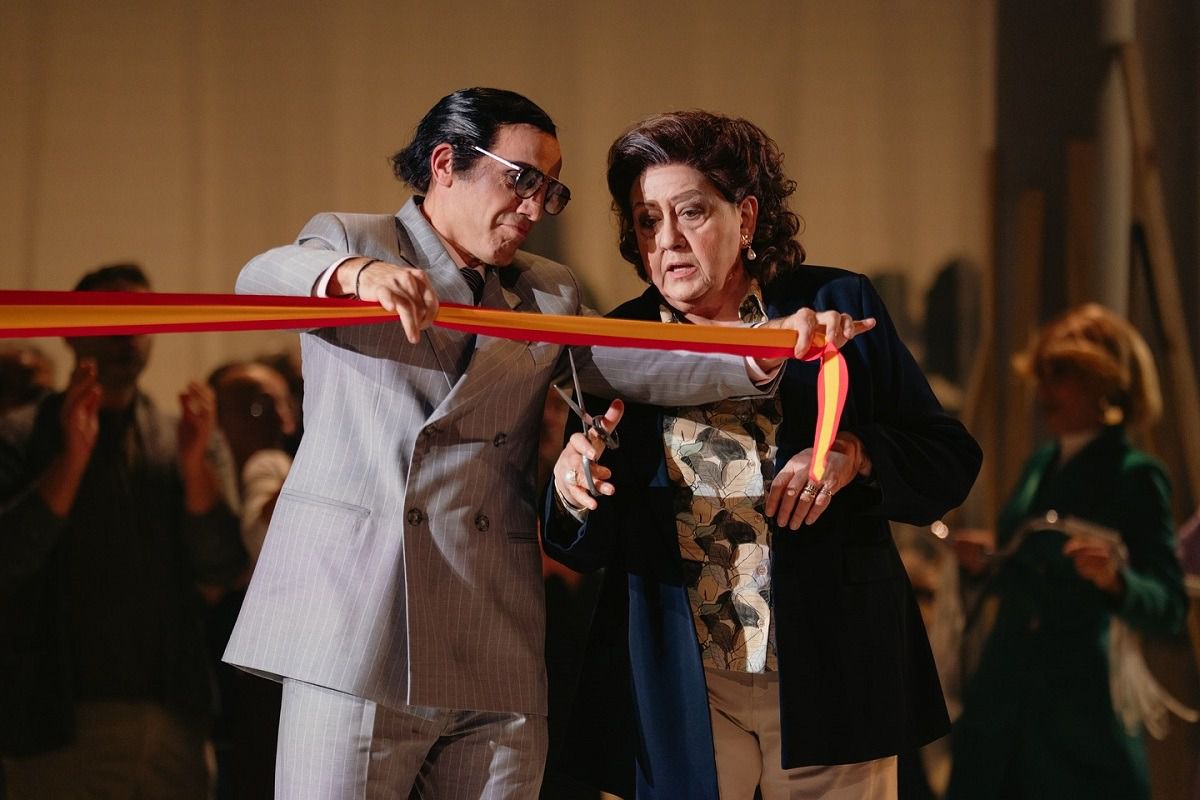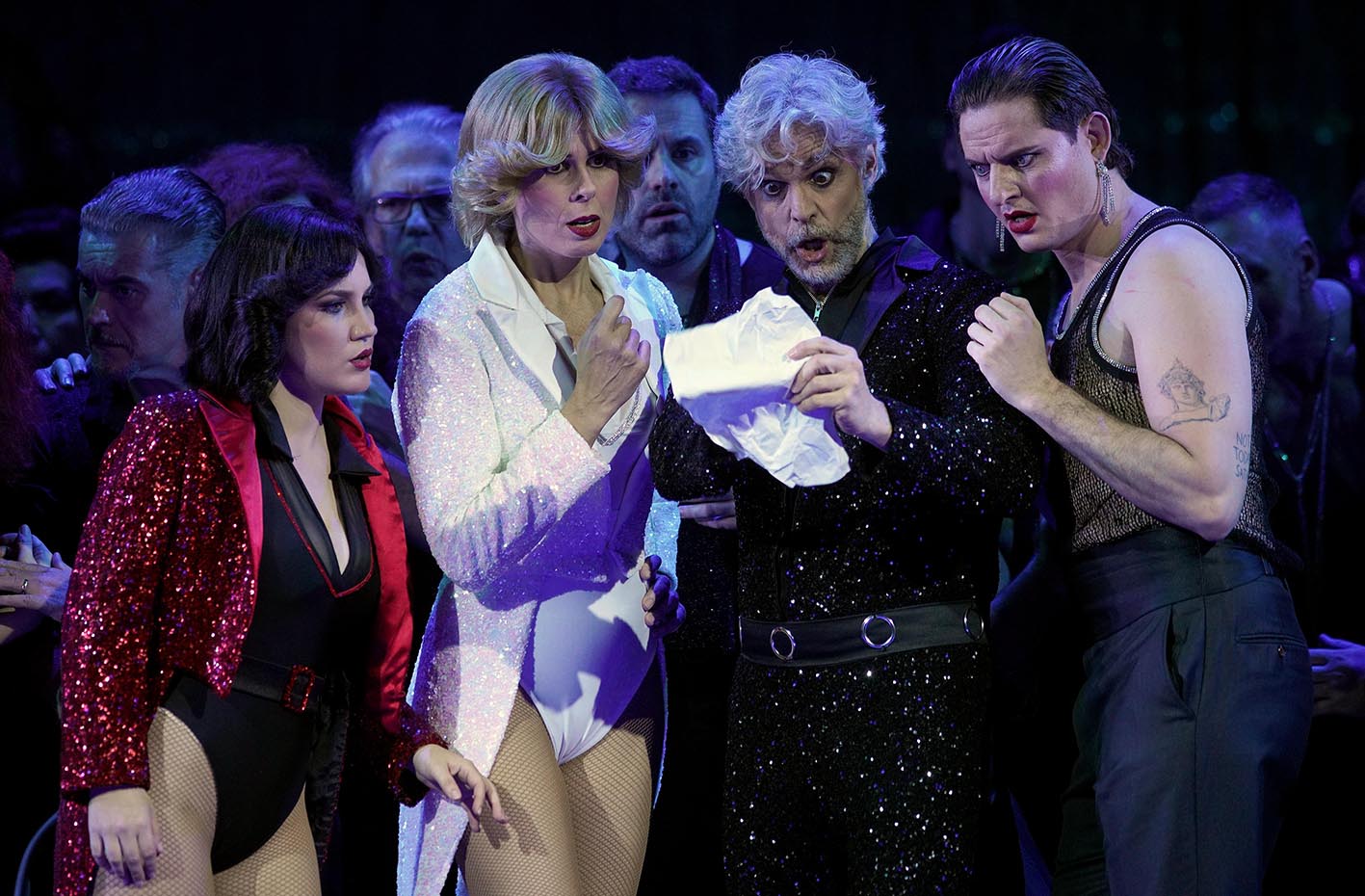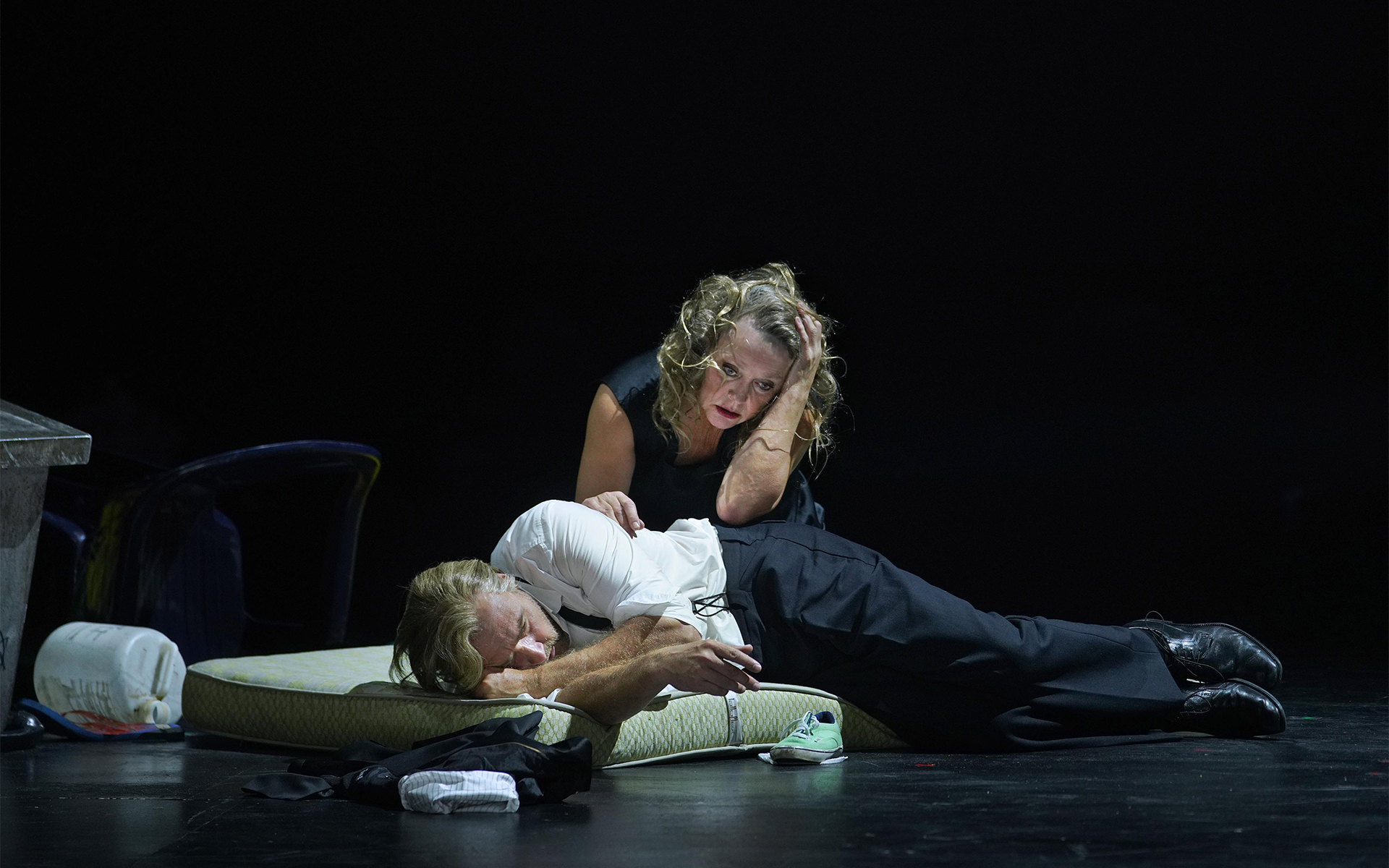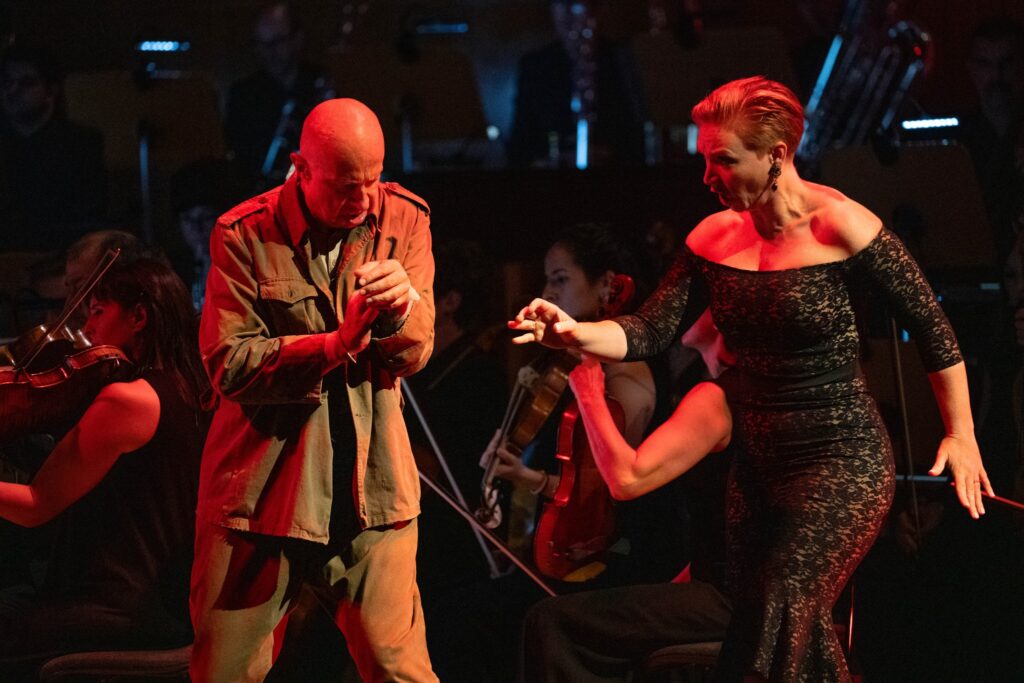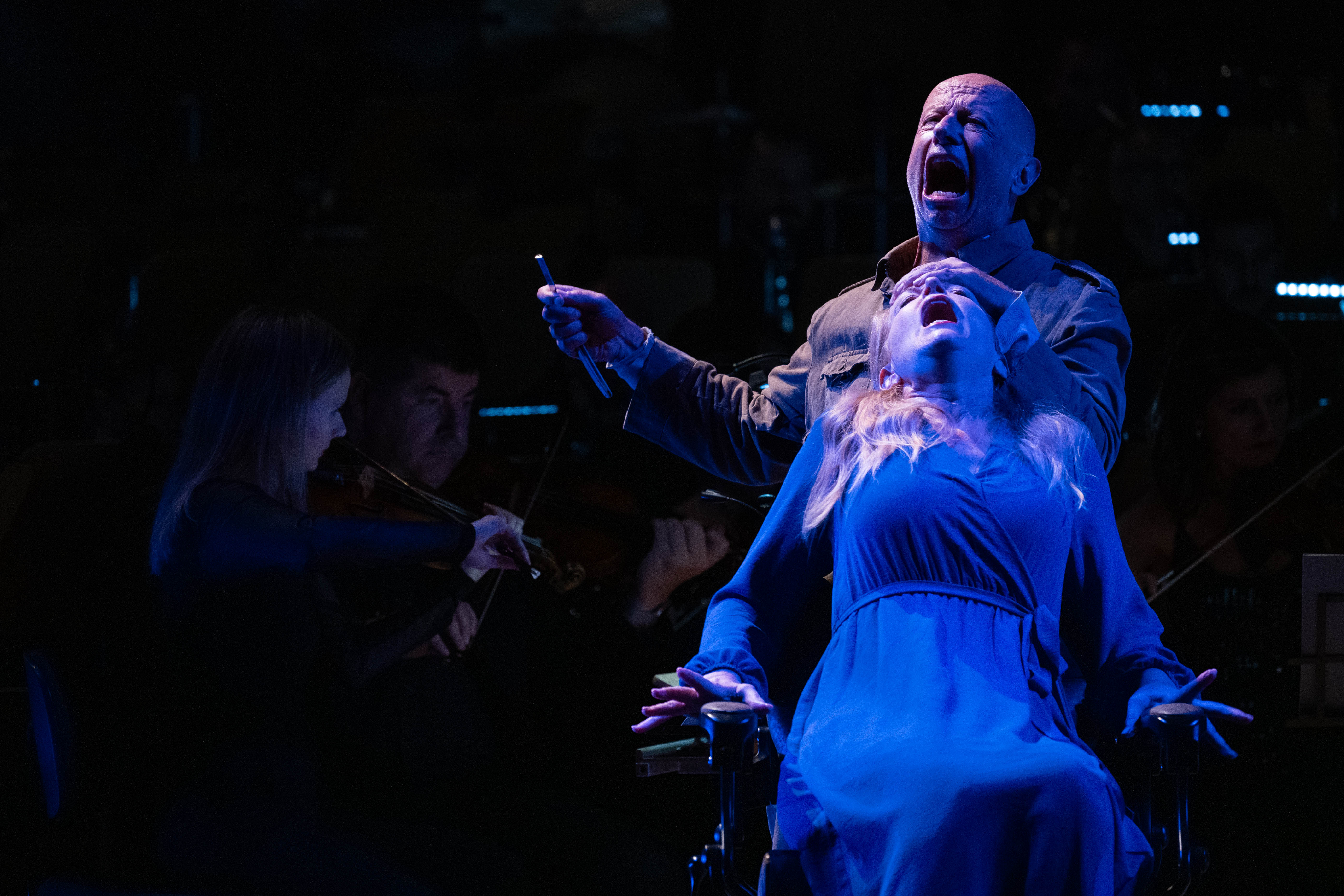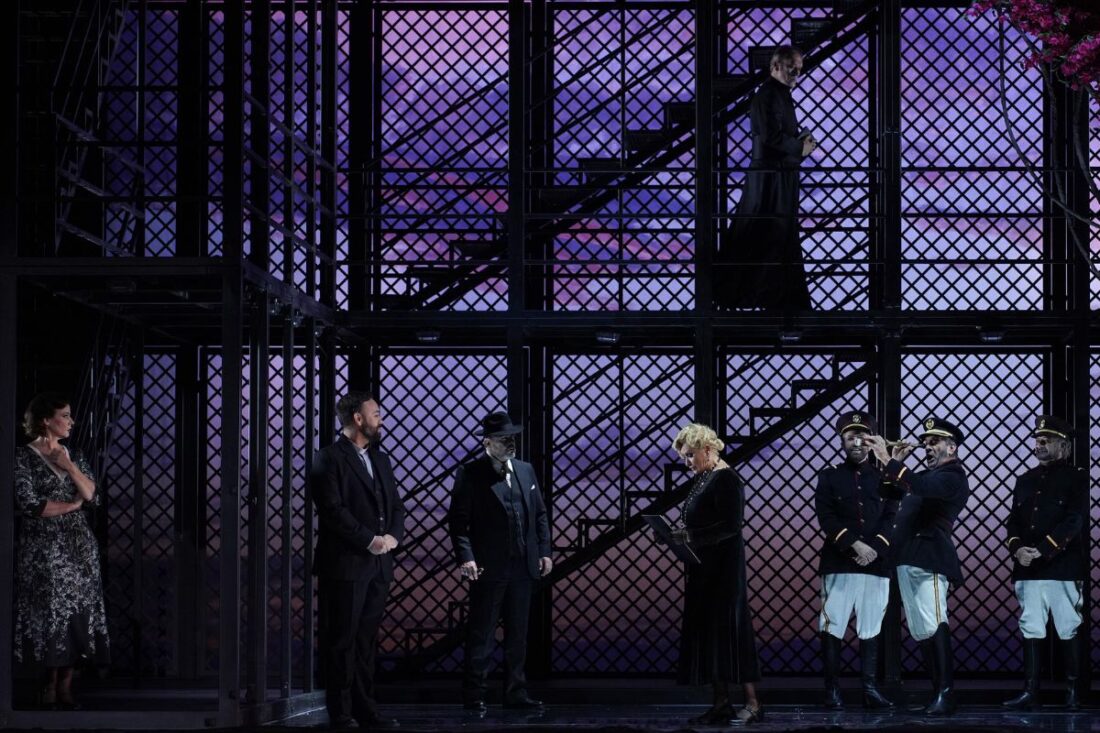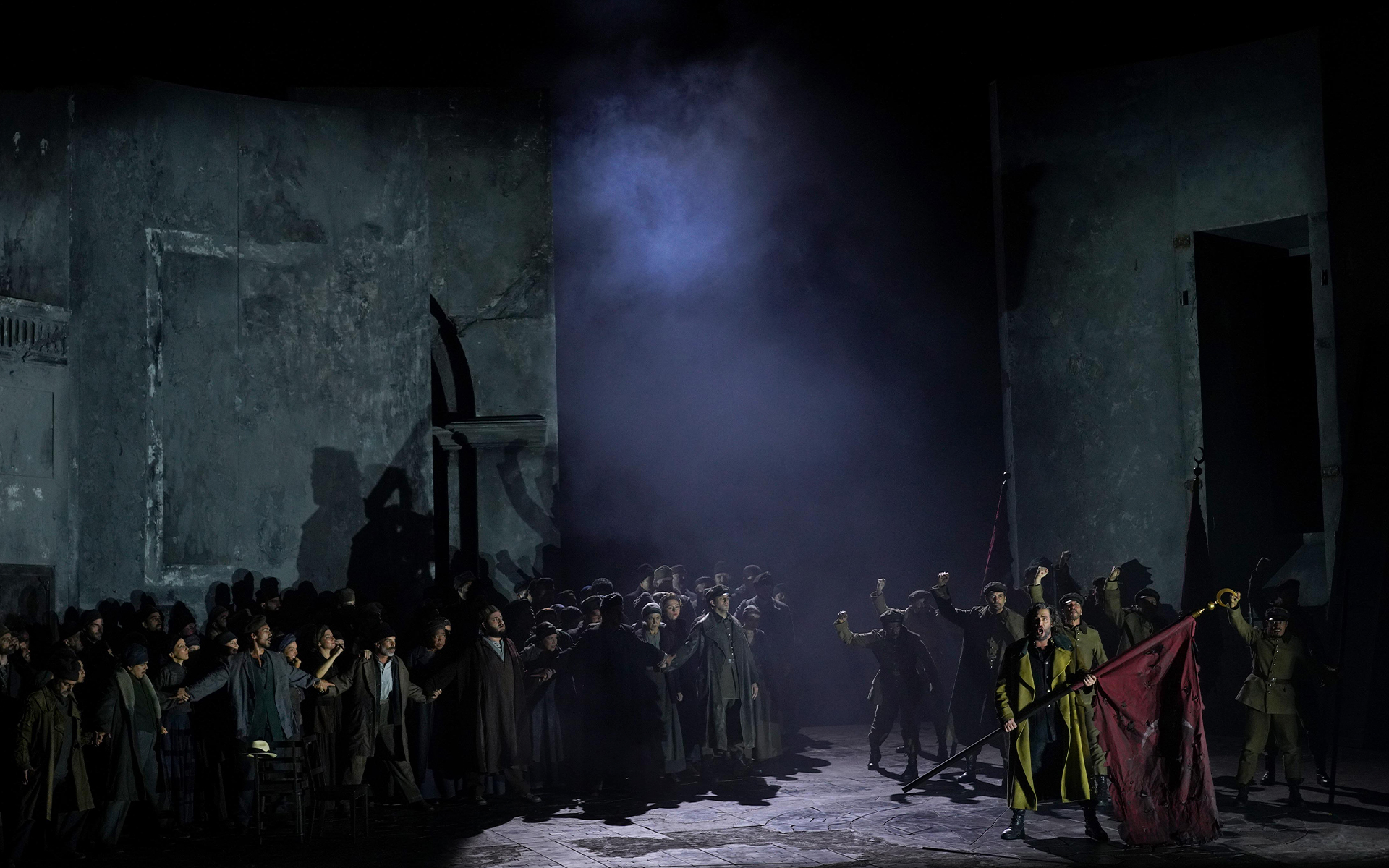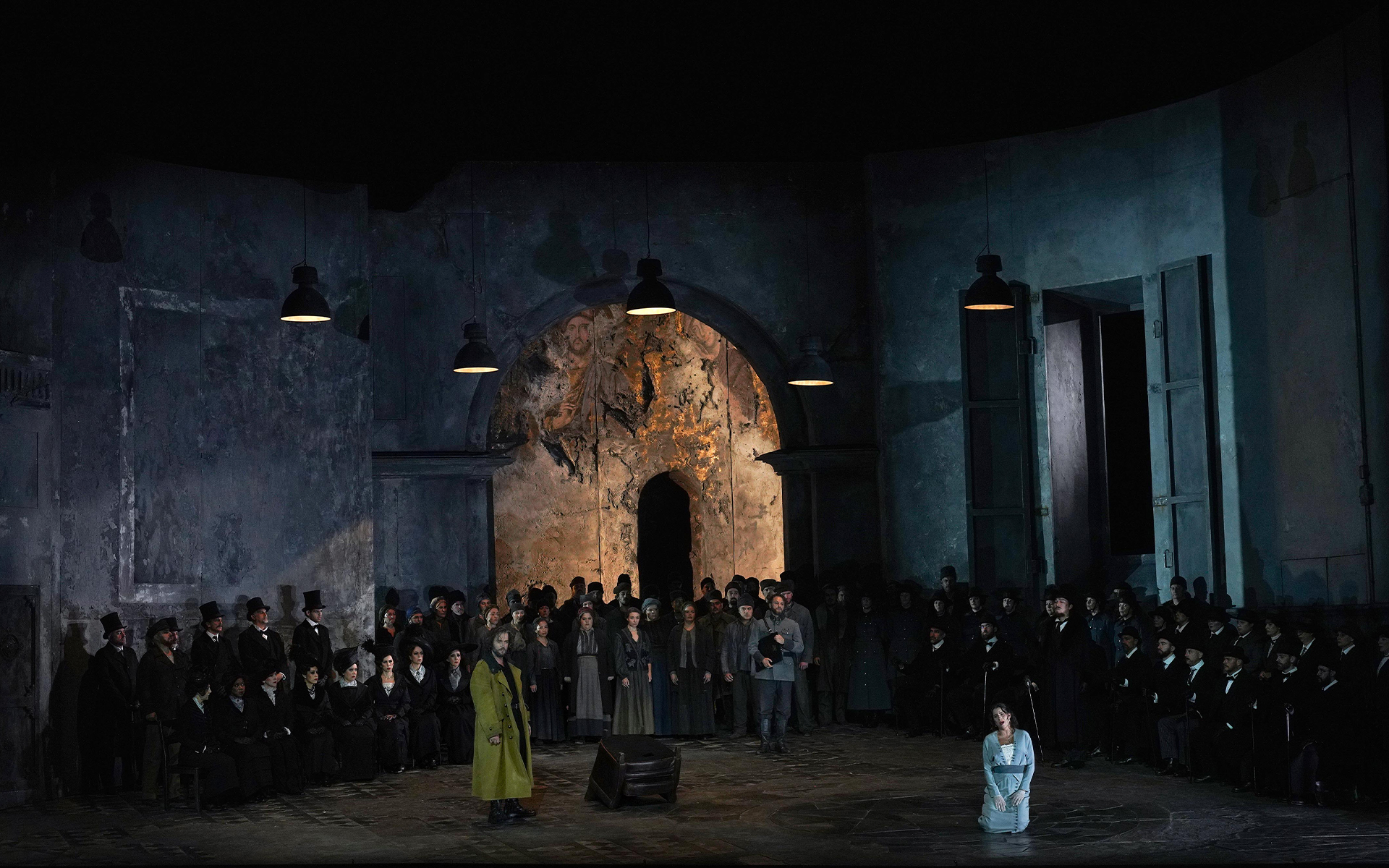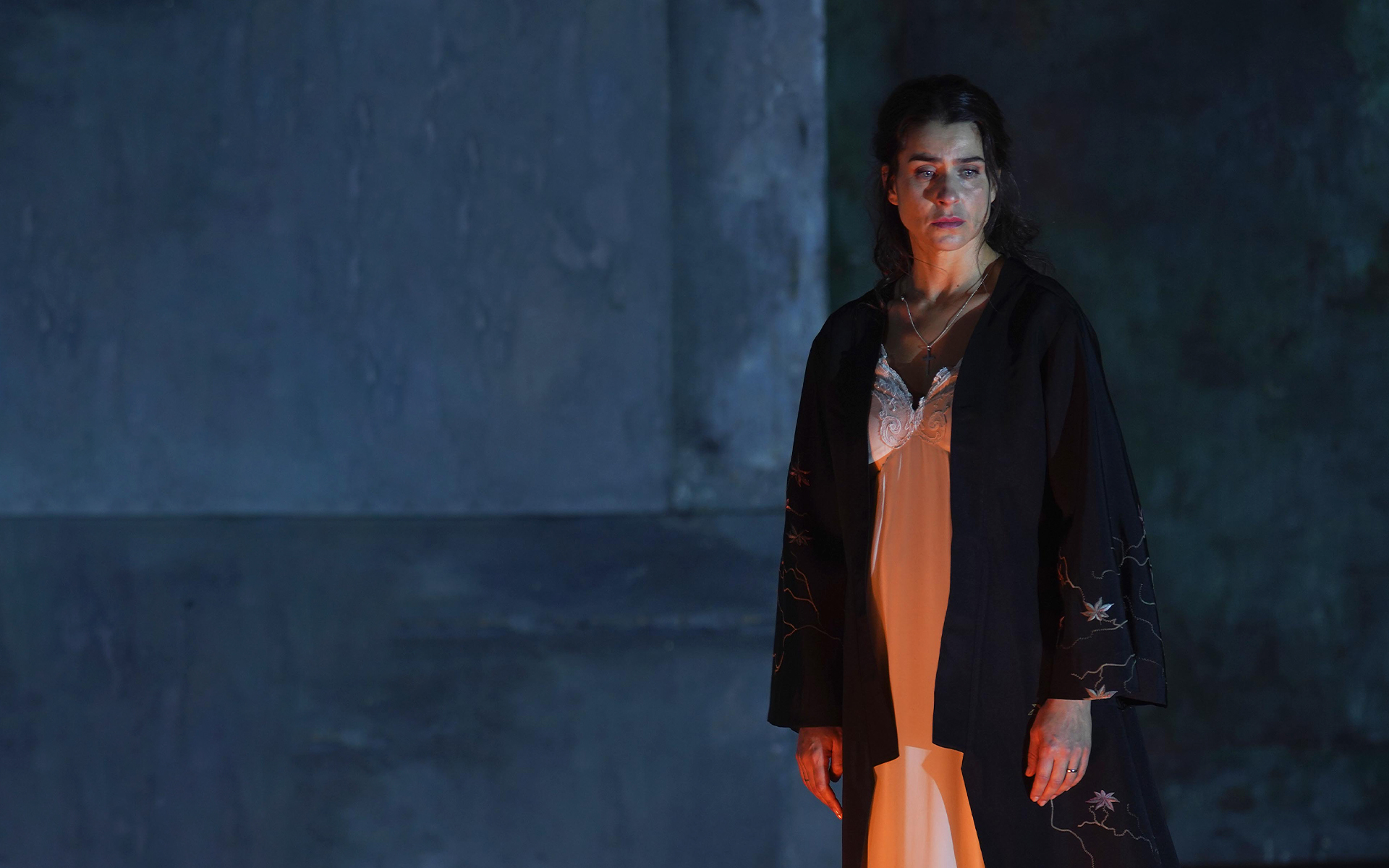Madrid, 28 de noviembre de 2025.
A medida que voy descubriendo la zarzuela, no me sorprendo solamente de la cantidad ingente de obras desconocidas que no se representan, por uno u otro motivo, sino también de lo actuales que pueden resultar en algunas de sus temáticas. ¿Hemos cambiado tanto los españoles? Siempre es interesante la labor de recuperación que se hace de nuestro ignorado patrimonio lírico, con independencia de si realmente merecía la pena tal exhumación y de su potencial éxito o no entre el público. Este año, el Teatro de la Zarzuela recupera una obra de Emilio Arrieta (autor de la celebérrima Marina), El Potosí Submarino, estrenada en el Teatro del Circo de Madrid en 1870. Esta zarzuela bufa trata sobre la estafa en una sociedad donde abunda la corrupción, en la que los vendedores de humo se hacen millonarios de la noche a la mañana, con el dinero de sus socios. Cuando esta obra fantástica se estrenó, España vivía un momento político muy convulso, en pleno Sexenio Democrático y en pleno cambio de dinastía.
Gracias a la iniciativa de la músicóloga María
Encina Cortizo, y la colaboración entre el también musicólogo Enrique Mejías y el director de escena Rafael R. Villalobos, el espectador moderno tiene una gran oportunidad para ver en vivo esta "zarzuela cómico-fantástica de gran espectáculo". Sin embargo, el resultado es una de cal y otra de arena: se trata de una música en general deliciosa, con un argumento interesante, pero la duración se antoja excesiva. Tanto si es por culpa de Arrieta, con su música bella pero no siempre dinámica, o del libretista Santiesteban cuyo libreto no invita a pensar que no da para tanta duración pese a lo universal del tema, o del regista Villalobos, que presenta una nueva versión del texto, y que al hacer una nueva adaptación, lo acerca al público y hasta lo hace reír, pero contribuye a acrecentar la duración del espectáculo, incluso si uno tiene la sensación de que hay guiños políticos (con los que puedo estar de acuerdo ideológicamente) metidos con calzador.
Villalobos, ya consagrado en la escena lírica nacional, lleva la acción del turbulento 1870 a un más reciente 1993, en una España con resaca tras las Olimpiadas de Barcelona, la Expo de Sevilla, la primera línea de tren de Alta Velocidad en el país, entre Madrid y Sevilla, y las Celebraciones del V Centenario de la Conquista de América, que el año anterior la habían puesto en la mira del mundo. Una España en la que la corrupción, los escándalos bancarios y una crisis económica obligaban a despertar de tanto entusiasmo, y que no nos es tan lejana. El libreto en esta versión hace guiños a cosas, programas de televisión y personajes de esa época. Cada acto lleva un título: la vida, la noche y el teatro. Además, la producción se enorgullece de haber usado elementos reciclados de otras producciones pasadas.
El primer acto transcurre la sala de una oficina, con sofás, escritorios, ordenadores enormes y estanterías con archivadores. Al fondo, una pantalla donde se ven imágenes de informativos y programas de televisión de 1992: Jesús Gil y sus mujeres en bañador en la piscina, los Juegos Olímpicos, Jordi Pujol, Bárbara Rey y Ángel Cristo, etc. Luego las imágenes desaparecen para dar paso a un lienzo donde unos perros devoran un ciervo: una imagen bastante alegórica. Al final del acto, el coro lee un periódico donde el titular dice "Conde Nado", una evidente alusión a Mario Conde (condenado a prisión por el escándalo financiero de Banesto), de quien Misisipí es un retrato alegórico. Junto a Pale-Ale, quien viste con chándal, aparecen dos jóvenes de escultural físico y abundante peinado, y que todo el tiempo bailan alegremente, vestidos de oro: se llaman Cerve (ella) y Cita (él). Aparece una mujer, la alcaldesa, con fuerte parecido a Rita Barberá (aunque en esa época no era tan mayor). Al final del acto, en pleno entusiasmo por las acciones de Misisipí, el coro agita banderas de España, y cuando el telón ha bajado, sacan las manos por debajo de él y las siguen agitando para el público.
El segundo acto transcurre en un cabaret o club de alterne, con mesas y un escenario brillante, coronado por el nombre "Potosí"en mayúsculas, e iluminado. Las anfibias son unas mujeres vestidas de negro con brilli-brilli, que parecen del lumpen. Coralina y Perlina son dos vedettes, siendo esta última, una alusión total a Bárbara Rey. Escamón es también un vedette masculino, quien además se lía con Misisipí. Cuando empieza el espectáculo, aparece la alcaldesa, quien flirtea un poco con Coralina. Uno de los momentos más interesantes, y tristes del espectáculo, es la historia de Marcelino, un becario pijo en la oficina de Misisipí, que lleva una doble vida como drag queen en el Potosí. La homófoba alcaldesa le denuncia y manda a una guardia civil que le detiene por corrupción de menores, mientras él, al que previamente le han leído las cartas augurándole una desgracia, se queja diciendo que no ha hecho nada. De nada le sirve, es detenido. Y para interpretar a este personaje se ha contado con una drag queen real, el popular Hugáceo Crujiente. Poco antes del triste final, causado por esta detención, Coralina y Perlina hablan sobre lo duro de ser mujer y artista, reivindicando la lucha por los derechos de las mujeres, y esperando que haya una época en que esta reivindicación no sea necesaria.
El tercer acto, transcurre en lo que parece ser una casa en construcción. Cerve y Cita bailan animados hasta que ella tiene un sofoco y se desmaya. Cerve la lleva en una carretilla, buscando ayuda. Entran los velocipedistas,y luego Misisipí pone una cinta con la bandera de España, que es cortada por la alcaldesa, que se queda un trocito, pero que luego tira ¿señal de que más que el país no le importa tanto como el poder? Aparecen Escamón, ahora vestido como niño pijo, quien es ahora amante de Misisipí. El enredo continúa, y cuando finalmente el gentío parece echarse encima de Misisipí para cobrarle las deudas, aparecen Cerve y Cita, y es sobre ellos contra quienes se dirige la masa indignada. La producción se pregunta así si aunque se ha acabado el fraude, si se ha castigado al culpable, y si realmente somos así. Misisipí rompe la cuarta pared diciendo "Así son las cosas, y así se las hemos contado", y cae el telón.
La Orquesta de la Comunidad de Madrid ha estado dirigida por el maestro mexicano Iván López Reynoso, quien sacó un bonito sonido de la orquesta, a destacar el fragmento orquestal donde se llevan al drag queen detenido, con un precioso solo de flauta, o el sonido de las cuerdas en el soliloquio feminista de Coralina y Perlina. El Coro del Teatro de la Zarzuela estuvo inspirado y divertido, especialmente en el acto segundo. A destacar las mujeres en los coros de las anfibias.
La función a la que he asistido ha sido la del segundo reparto.
Enric Martínez-Castignani es un divertido Misisipí. Nuria García Arrés fue una excelente Celia, muy bien cantada en su romanza del primer acto. Enrique Ferrer fue a más en la función, empezando más discreto pero alcanzando un buen nivel en el rol de Cardona a partir del segundo acto. Irene Palazón tuvo uno de los mejores números, en el rol de Perlina, con un excelente agudo en la frase "al abrirla fue casual" en la Cavatina del acto segundo. Laura Brasó fue una notable Coralina, así como José Luis Sola como un bien cantado y mejor actuado Escamón. Rafa Castejón fue un divertido Pale-Ale. El resto del elenco, entregado a su gran labor actoral.
Como ya he indicado antes, se trata de una obra agradable musicalmente, pero su duración es excesiva. Además se ha representado con dos descansos, y por tanto se salía casi a las once de la noche: un tour de force para el público. Esa sensación de pesadez me hacía sentir que estaba asistiendo a una función de Parsifal o Los Maestros Cantores en el mismísimo Bayreuth... y no en el buen sentido. La primera semana estaba casi todo vendido, pero a cambio se dice que hubo muchas deserciones por parte del público y que al final, el teatro se quedaba a la mitad o menos. En esta segunda y última semana en cambio, ha habido muchas entradas a la venta disponibles, y en la función del viernes 28 estaba la mitad del teatro vacío ya desde el inicio de la representación. Aunque no tantas como la semana anterior, sí he visto algún que otro espectador abandonando la sala en el tercer acto.
Aun así, hubo cosas buenas: el público presente se rió con los gags, especialmente los que hacían referencias a cosas que conocían de los años 90; y se veía un número apreciable de espectadores menores de 45 años. Los aplausos, aunque sinceros, no duraron mucho quizá por la fatiga del público y por lo tarde que ya era.
No me arrepiento de haber ido, iba atraído por el montaje de Villalobos y me he encontrado con una música bonita, pero que dura demasiado. Agradezco públicamente a Enrique Mejías la recomendación personal de ir a la representación, algo que no entraba en mis planes, y no me arrepiento de haber ido a pesar de todo.
Las fotografías escénicas y vídeos no son de mi autoría, si alguien se muestra disconforme con la publicación de cualquiera de ellas en este blog le pido que me lo haga saber inmediatamente. Cualquier reproducción de este texto necesita mi permiso.




